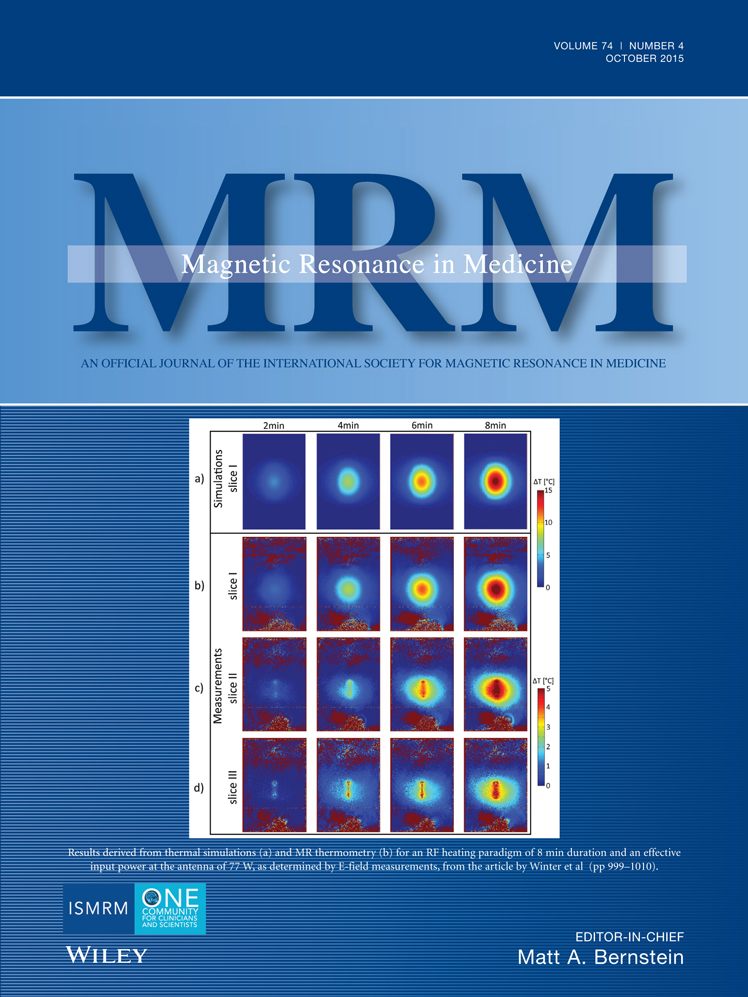Temperature-dependent MR signals in cortical bone: Potential for monitoring temperature changes during high-intensity focused ultrasound treatment in bone
Abstract
Purpose
Because existing magnetic resonance thermometry techniques do not provide temperature information within bone, high-intensity focused ultrasound (HIFU) exposures in bone are monitored using temperature changes in adjacent soft tissues. In this study, the potential to monitor temperature changes in cortical bone using a short TE gradient echo sequence is evaluated.
Methods
The feasibility of this proposed method was initially evaluated by measuring the temperature dependence of the gradient echo signal during cooling of cortical bone samples implanted with fiber-optic temperature sensors. A subsequent experiment involved heating a cortical bone sample using a clinical MR-HIFU system.
Results
A consistent relationship between temperature change and the change in magnitude signal was observed within and between cortical bone samples. For the two-dimensional gradient echo sequence implemented in this study, a least-squares linear fit determined the percentage change in signal to be (0.90 ± 0.01)%/°C. This relationship was used to estimate temperature changes observed in the HIFU experiment and these temperatures agreed well with those measured from an implanted fiber-optic sensor.
Conclusion
This method appears capable of displaying changes related to temperature in cortical bone and could improve the safety of MR-HIFU treatments. Further investigations into the sensitivity of the technique in vivo are warranted. Magn Reson Med 74:1095–1102, 2015. © 2014 Wiley Periodicals, Inc.




